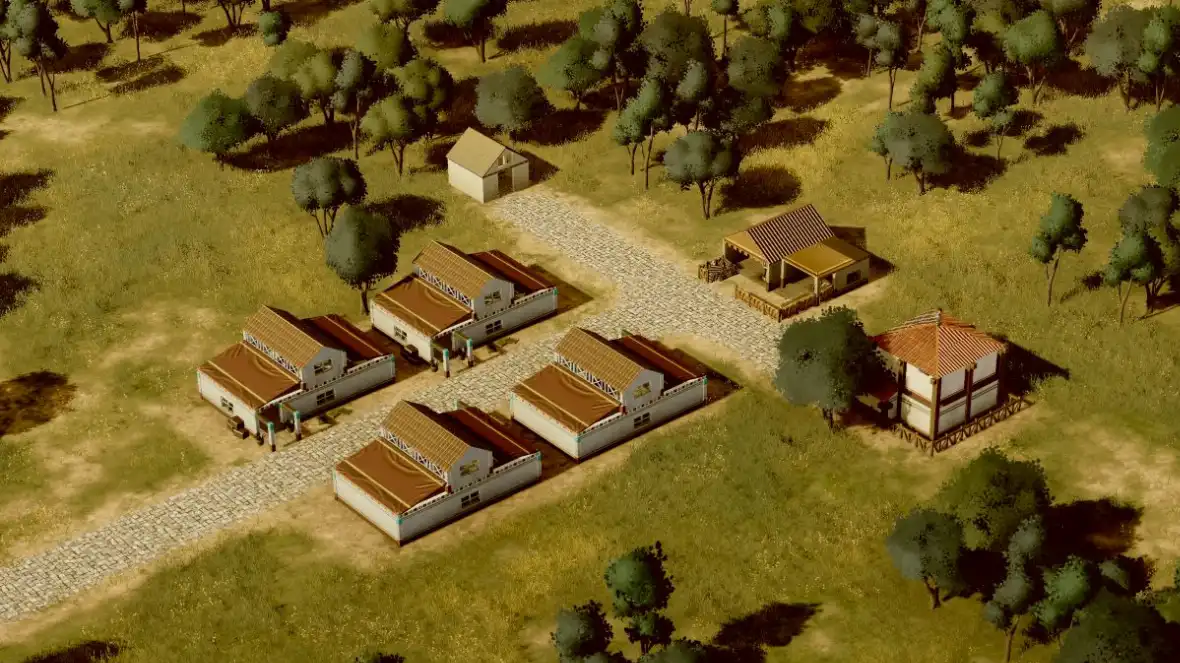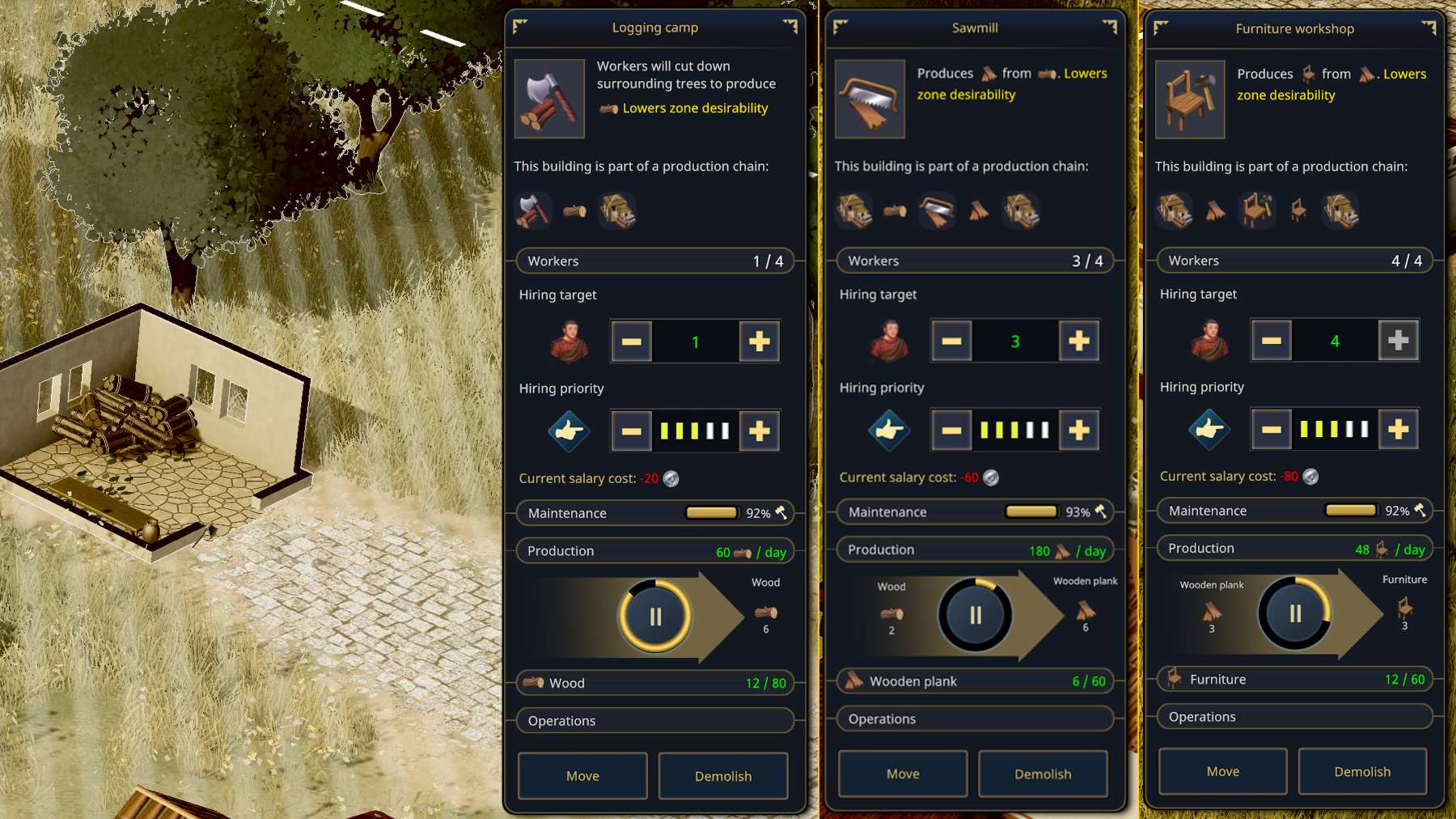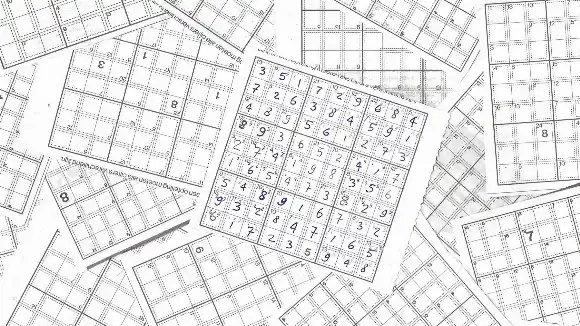
In this article
Producing enough of a required good is always important in a game of Citadelum. If you don't, your citizens won't be happy and they'll be more likely to start thieving, murdering or leaving the city. Having enough production buildings and workers assigned is needed then.
Furniture is a consumption good needed by both Plebeians and Patricians when they reach level 6. It is produced by a furniture workshop, which requires wooden planks as input. Wooden planks are produced at the sawmill, which uses wood as input.
But how many logging camps, sawmills and furniture workshops do you need for an ideal production chain in Citadelum? And how citizens will they supply?
Production rates
Let's start with the basics: finding out the production rates for these three buildings.
The production rates for logging camps, sawmills and furniture workshops, calculated per worker per day, are:
- 60 wood in the logging camp
- 60 planks in the sawmill
- 12 furniture in the furniture workshop
It is good to know these numbers. Especially the furniture workshop will be important, as the consumption of Plebeians and Patricians compared to the production is quite steep. More on that later.
Consumption for production chain
Now we know the production, let's have a look at the consumption of these production buildings.
Starting at the furniture shop: 12 units furniture are produced every day. 3 furniture are produced per production cycle, which means 4 production cycles per day.
For each production cycle, 3 wooden planks are required. At 4 cycles a day, this means the furniture workshop requires 12 wooden planks per day as input.
Wooden planks are produced at a sawmill. A sawmill worker produces 60 wooden planks per day. The worker produces these planks in 10 cycles of 6 planks each.
For each production cycle, 2 wood is required. At 10 cycles a day, this means the sawmill requires 20 wood per day as input.
The logging camp doesn't use any input, it just produces wood.

The three production buildings in a furniture production chain: logging camp, sawmill and furniture workshop.
Logging camp, sawmill, furniture workshop ratio
Knowing both production and consumption, we can work out the worker ratio for logging camp, sawmill and furniture workshop.
1 logging camp worker can sustain 3 sawmill workers. 1 logging camp worker produces 60 wood and 1 sawmill worker requires 20 wood, 3 * 20 = 60.
The ratio for logging camp : sawmill is 1 : 3.
1 sawmill worker can sustain 5 furniture workshop workers. 1 sawmill worker produces 60 wooden planks, 1 furniture workshop worker requires 12 wooden planks. 5 * 12 = 60.
The ratio for sawmill : furniture workshop is 1 : 5.
This all leads us to the ratio for logging camp : sawmill : furniture workshop, which is 1 : 3 : 15.
So: 1 logging camp worker can provide enough wood for 3 sawmill workers who make enough wooden planks for 15 furniture workshop workers.
Building wise, the ratio is 1 logging camp : 1 sawmill : 4 furniture workshops.
Population requirement
Both Plebeians and Patricians require furniture at level 6.
A Plebeian house at level 6 requires 5 furniture per day. A Patrician house at level 6 requires 10 furniture per day.
1 production chain of 1 logging camp workers : 3 sawmill workers : 15 furniture workers will produce 180 furniture per day.
This is enough furniture to supply 12 Patricians' houses and 12 Plebeians' houses with furniture. Or 18 Patricians' houses. Or 36 Plebeians' houses. Whatever ratio you choose.
If you have any more citizens than that - which is likely at higher prestige levels - you will want to increase the output.






